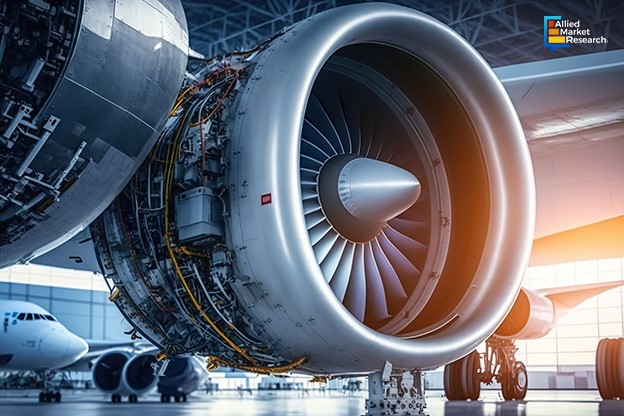Why Are Aircraft Engine Forging Businesses Investing in Cold Forging Technologies?

11 Mar
2024
Highlights:
- Introduction
- Advantages of cold forging over conventional forging
- Growth of the industry in the Asia-Pacific region
- Major partnerships in the sector
The aviation sector has evolved tremendously over the last few decades; new technologies are being developed that increase the resilience and robustness of aircraft. Aircraft engine forging technology is one such example. Forging refers to a manufacturing process that is used to transform the shape of a material so that it can be used for further use. Thus, forging involves the manipulation of materials using deformation or compression techniques to produce a desired shape. Typically, metals such as aluminum, nickel, copper, cobalt, titanium, etc., are used for forging processes. In the case of aircraft, forging processes are primarily used for manufacturing components such as blades, turbine discs, rotors, and other aircraft parts.
Analyzing the growing popularity of cold forging technology in the aircraft manufacturing sector
Along with forging, casting is also a widely used manufacturing process in the aerospace industry. Though similar in their objective, casting and forging are two different processes. While forging involves heating metals and hammering them to obtain desired shapes, casting involves melting metals and pouring them into casts to achieve the necessary results.
Engineering experts, in the past few years, have pointed out some of the inherent flaws associated with traditional forging techniques which involve heating the metals. Firstly, the dimensional accuracy in the case of conventional forging is quite low. Also, improper heating of the metal to high temperatures may result in warping, i.e., unwanted distortions in the metal shape. Moreover, the metals' grain structure is also disturbed during the heating process, thus weakening the material. Finally, the cost of conventional forging is quite high which, in turn, increases the cost of the component and the product.
To overcome these challenges, there is an increased adoption of cold-forging technologies in aircraft manufacturing processes. Studies have shown that cold forging improves the mechanical strength of the metal and enhances the overall resilience of the metal structure. The underlying reason behind this is that cold forging technology refines the grain structure of the metal which helps in improving the strength and toughness of the metal. This, ultimately, brings down the rate of wear and tear of the metal, thus increasing the life of the aircraft component.
Another important reason behind the growing emphasis on cold forging is that this technology enhances the dimensional accuracy of the components that are being manufactured. Since the metal isn’t heated, the chances of distortion of the metal go down and intricate shapes with fine details can be developed from the metal. Thus, aircraft components that have fine features, undercuts, and threads can be more precisely manufactured using cold forging technologies. Furthermore, heating of the metal causes its oxidation and leads to scale formation. This may result in material wastage, thereby raising the cost of raw materials. On the other hand, cold forging is a much more cost-friendly and environmentally sustainable process.
How has the Asia-Pacific region fared in the aircraft engine forging industry?
The aircraft engine forging industry is expected to witness major growth in the Asia-Pacific region in the coming period. The increasing pace of urbanization and industrialization has led to a growth in the demand for air travel services from the people of this region. The rising disposable income of people in various countries of Asia-Pacific and the increasing expanse of the tourism industry have also contributed to the growth in demand for air transportation services. This growth in demand for air travel services is anticipated to open up new opportunities in the Asia-Pacific region.
Along with this, the overall increase in aircraft production is also predicted to help in augmenting the growth rate of the domain. Apart from these factors, technological advancements in material science for manufacturing high-performance alloys are also anticipated to play a role in the growth of the sector. Due to these growth drivers, the Asia-Pacific region of the aircraft engine forging sector is projected to have the highest growth rate of 8.9% in the 2023-2032 period.
HAL and Safran Aircraft Engines enter into a partnership to develop advanced forging techniques
The aircraft engine forging industry is a highly competitive one with numerous companies engaging in alliances to establish their dominance in the industry. For instance, in October 2023, Hindustan Aeronautics Limited, an Indian state-owned aeronautics company, announced that it was partnering with Safran Aircraft Engines, a French aircraft engine manufacturer. The partnership is aimed at enhancing the ring forging capabilities, which will help improve the aircraft engine manufacturing quality. Such partnerships and collaborations are expected to widen the scope of the sector in the years to come.
To conclude, the forging of metals is an important component of aircraft manufacturing processes. Due to some major disadvantages of conventional forging techniques, cold forging technologies have been developed which have received huge demand from the aircraft manufacturing sector. The rise of the market in the Asia-Pacific region and partnerships between major companies will help the industry to flourish in the coming period.
For tips and suggestions on how your business can capitalize on the opportunities offered by the market, feel free to contact us

Akhilesh Prabhugaonkar
Author's Bio- Akhilesh Prabhugaonkar holds a bachelor’s degree in Electronics Engineering from the reputed Vishwakarma Institute of Technology. He has a special interest in the fields of forensics, world history, international relations and foreign policy, sports, agriculture, astronomy, security, and oceanography. An ardent bibliophile and melophile, Akhilesh loves to write on topics of his interest and various other societal issues. This love for writing made him enter the professional world of content writing and pursue his career in this direction.
Avenue: Entire Library membership of Allied Market Research Reports at your disposal
- Avenue is an innovative subscription-based online report database.
- Avail an online access to the entire library of syndicated reports on more than 2,000 niche industries and company profiles on more than 12,000 firms across 11 domains.
- A cost-effective model tailored for entrepreneurs, investors, and students & researchers at universities.
- Request customizations, suggest new reports, and avail analyst support as per your requirements.
- Get an access to the library of reports at any time from any device and anywhere.
Related Post
-
How are Submarine Cables Transforming Global Connectivity with Enhanced User Experience?
-
Endoscopy Procedures: Transformations in Techniques and Applications
-
AI-Powered Video Analytics: How the Product Actually Works for enterprises
-
Painting Robots: Transforming Precision Coating and Creative Applications
-
Innovations in Pharmacovigilance Systems Advancing Patient Safety
-
Understanding Edge Security: Keeping Data Safe Near the Source
-
Exploring the Use and Advancements of 3D Laser Scanners in Professional Applications
-
Reinforcing Industrial Controls with Smarter Tools and Training








